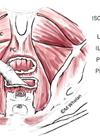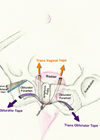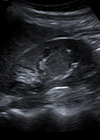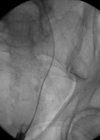Features
Physiotherapy first for pelvic floor dysfunction
Physiotherapy should be included in first-line management options for pelvic organ prolapse and urinary incontinence in women [1,2]. Additionally, referral to physiotherapy is widely practised for the management of urinary incontinence in men, faecal incontinence, defecation disorders and various pelvic...
An algorithm for the management of haemorrhagic cystitis
Haemorrhagic cystitis (HC) can be one of the most difficult conditions to treat in urological practice. It is characterised by intractable bleeding from the bladder and may be acute or chronic. The most frequently reported causal factors are radiotherapy (RT)...
Urinary incontinence in women – part 2: management
In the second part of our comprehensive overview of urinary incontinence (UI) the authors explore the plethora of treatment options for this complex condition. (Part 1 available here). Conservative management Initial treatment of incontinence should be conservative. Caffeine reduction and...
Radiological appearances of non-vascular renal anatomical variants
Anatomical variants of the renal tract are common and, although often asymptomatic, may present with complications. It is essential to identify anatomical variants, as this may have an impact upon surgical planning and management. This article aims to demonstrate radiological...
Meeting in the middle: a review of the rendezvous technique to treat impassable ureteric strictures and transected ureters
Introduction Complex ureteric strictures present a significant challenge with some patients undergoing multiple separate urological and radiological procedures to try to cross a stricture without success. Cross-departmental collaboration with uroradiology may allow a decrease in the number of separate interventions....
Reflections on 20 years as an Army Reserve doctor: live a life less ordinary
It seems a very short time ago that my predecessor recruited me into my regiment as a surgical senior house officer during a varicose vein operation in a cottage hospital in Stroud, informing me that I would be only the...
Prostate cancer survivorship: a new path for uro-oncology
Over two million people in England have a diagnosis of cancer [1]. Of this figure, over 250,000 have been diagnosed with prostate cancer [2]. However, during the next decade, a rapid increase in the number of new cancer diagnoses, as...
Urinary incontinence in women – part 1: terminology and diagnosis
Introduction Urinary incontinence (UI) is the involuntary and often embarrassing leakage of urine. It is a condition that is both under-reported and under-diagnosed, and when reported it is, unfortunately, often not assessed and managed adequately. Incontinence of urine is encountered...
Guide to gaining approval for a clinical study
This article focuses on gaining approval for clinical research involving NHS patients, although the principles can be applied to other types of research. It can be quite a daunting process for the uninitiated applicant. Often it can be made less...
Bladder cancer – an overshadowed ‘volcano’
Bladder cancer has often been overshadowed by the limelight of prostate cancer. However, of all the urological cancers, bladder cancer is the only one which has shown a slight decline in age-standardised five-year survival rates over the last couple of...
HIV / AIDS – implications for the urologist
“It’s no fun to have HIV even though it’s viewed as a chronic, controllable disease. It means being wedded to the health system.” - Philip Berger, Associate Professor in the Department of Family and Community Medicine, Toronto, Canada; and leading...
Fournier’s gangrene
Introduction Fournier’s gangrene (FG) is a rare but fulminant form of infective necrotising fasciitis affecting the perineum and external genitalia, which can rapidly progress along fascial planes. It most commonly affects men, but can occur in women and children, with...













